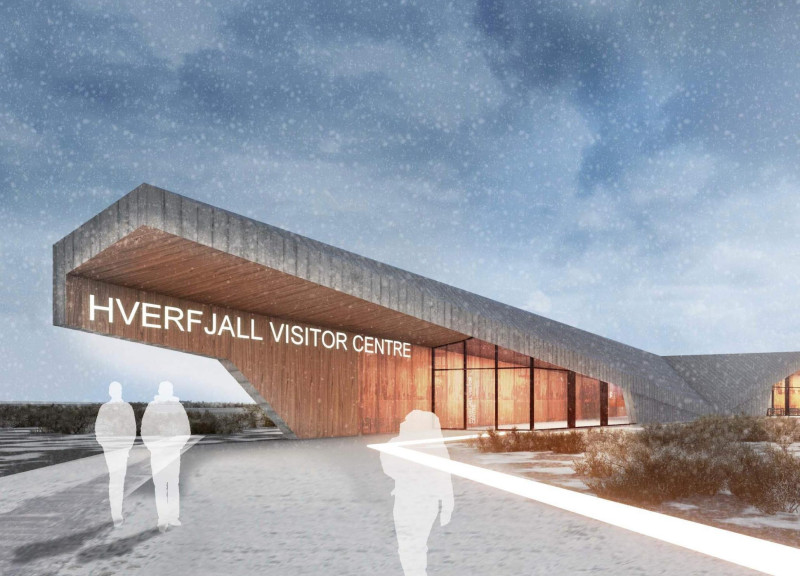5 key facts about this project
The Hverfjall Visitor Centre is located in the Mývatn region of Iceland. It serves as a gathering space for visitors, providing them with opportunities to connect with the striking natural surroundings. Designed with a concept that highlights the area's geological history, the building invites exploration and contemplation, encouraging a deeper understanding of the landscape. The theme of “hosting the presence” reflects a desire to create a memorable experience tied to the natural world.
Design Concept and Form
The design focuses on blending the structure with its environment. The exterior has a rough quality that mirrors the rugged landscape of Mývatn. Visitors are led on a journey through the building, ultimately arriving at a central coffee shop. This coffee shop acts as a social space, where people can gather, relax, and enjoy views of Hverfjall. The design promotes interaction while maintaining a connection to the natural beauty that surrounds the site.
Materials and Construction
Insulated concrete slabs and steel framing form the backbone of the construction. These materials offer both strength and efficient thermal performance. Insulated panels with a rainscreen and internal linings are used to create an interior that is comfortable and energy-efficient. The selection of materials is thoughtful, addressing the weather conditions typical of the region while contributing to a sustainable design approach.
Sustainable Practices
Sustainability plays a significant role in the design decisions of the Visitor Centre. Careful planning minimizes the impact on existing flora and fauna. The building features sloped roofs to help manage snow accumulation. Heated gutters and an insulated tank for rainwater collection are installed to support environmental efficiency. The use of geothermal energy for heating and cooling further reflects a commitment to sustainability, making the centre more responsible in its energy use.
Integration with Landscape
The structure is oriented to capture sunlight, allowing public spaces to benefit from natural warmth. Additionally, a micro wastewater treatment facility is part of the design, addressing waste management efficiently. These features work together to strengthen the relationship between the building and the landscape, ensuring that the centre respects its natural setting.
The building's rugged shell reflects the geological features of the Mývatn area. This connection enhances visitor experiences and deepens the understanding of the region's geological story. Such design details make the centre a thoughtful addition to its environment.






















































